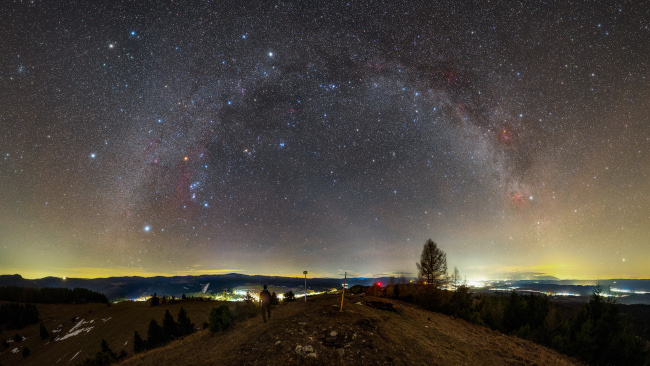Glossary term: মীন
Description: মীন হল রাশিচক্রের একটি নক্ষত্রমণ্ডল, অর্থাৎ এই নক্ষত্রমণ্ডলের তারা আকাশের সেই অংশে অবস্থিত যেখানে পৃথিবীর সূর্যপরিক্রমার ক্ষেত্র (ecliptic) অর্থাৎ সূর্যের চারপাশে পৃথিবীর কক্ষপথ দ্বারা নির্ধারিত সমতলটি ছেদ করে। এই কারণে, পৃথিবী থেকে আমরা নিয়মিতভাবে এই নক্ষত্রমণ্ডলে সূর্যকে, এবং সৌরজগতের অন্যান্য গ্রহগুলোকেও দেখতে পাই। সূর্যের ক্ষেত্রে এটি মার্চ মাসের মাঝামাঝি থেকে এপ্রিল মাসের মাঝামাঝি পর্যন্ত হয়, যার মধ্যে বসন্ত বিষুব আছে। (অবশ্যই, যখন সূর্য সেখানে থাকে, আমরা নক্ষত্রমণ্ডলের তারাগুলো দেখতে পাই না।)
ইন্টারন্যাশনাল অ্যাস্ট্রোনমিক্যাল ইউনিয়ন দ্বারা নির্ধারিত ৮৮টি আধুনিক নক্ষত্রমণ্ডলের মধ্যে মীন অন্যতম, কিন্তু এটি আরও অনেক পুরনো - এটি ইতিমধ্যে ২য় শতাব্দীর জ্যোতির্বিজ্ঞানী ক্লডিয়াস টলেমীর নামকরণ করা ৪৮টি নক্ষত্রমণ্ডলের মধ্যে অন্যতম ছিল।
Related Terms:
See this term in other languages
Term and definition status: The original definition of this term in English have been approved by a research astronomer and a teacher The translation of this term and its definition is still awaiting approval
The OAE Multilingual Glossary is a project of the IAU Office of Astronomy for Education (OAE) in collaboration with the IAU Office of Astronomy Outreach (OAO). The terms and definitions were chosen, written and reviewed by a collective effort from the OAE, the OAE Centers and Nodes, the OAE National Astronomy Education Coordinators (NAECs) and other volunteers. You can find a full list of credits here. All glossary terms and their definitions are released under a Creative Commons CC BY-4.0 license and should be credited to "IAU OAE".
Related Media
Warm Winter Night Over Spiš Region
Credit: Robert Barsa/IAU OAE
License: CC-BY-4.0 Creative Commons অ্যাট্রিবিউশন 4.0 আন্তর্জাতিক (CC BY 4.0) icons









